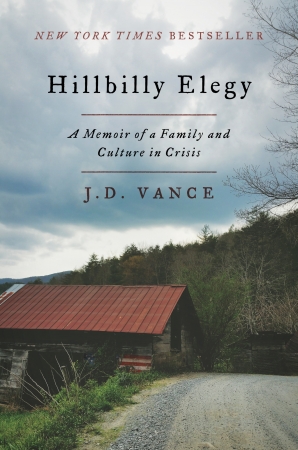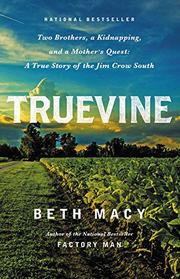We read nonfiction to learn, to be entertained, and to become better citizens of the world. Just as we eat whole grains, vegetables, and fruits to keep our bodies healthy, we read nonfiction to inform and enrich our minds. We don’t want to consume bland, tasteless, or heartburn-inducing foods nor do we wish to read dull, boring, or poorly researched books. When we hunger for good nonfiction, we want books that nourish, captivate, enlighten, and educate us. We seek books that tell us the truth and convey it in a journalistic style that keeps us engaged.
A word about subtitles – Nonfiction books have long had subtitles to clarify, expand upon, and define their titles. Recently, those subtitles have grown exponentially as a tool for targeted marketing in online searches. If you’ve wondered why some subtitles seem almost as long as the book itself, consider Candice Millard’s Hero of the Empire: The Boer War, A Daring Escape, and the Making of Winston Churchill. Each word in the title and subtitle targets a different search topic thus broadening the appeal of the book to diverse groups of online searchers. Publishers outside the U.S. seem less reliant on such searches; the British title of Millard’s book is Hero of the Empire: The Making of Winston Churchill. Thanks, Google
.
The Top Ten Nonfiction Books I Read in 2016 (including two published previously):
· Accidental Saints by Nadia Bolz-Weber (published in 2015)
· Blood at the Root by Patrick Phillips
· Hero of the Empire by Candice Millard
· Hillbilly Elegy by J.D. Vance
· Locally Laid by Lucie B. Amundsen
· Meeting in the Margins by Cynthia Trenshaw
· Tiny Beautiful Things by Cheryl Strayed (published in 2012)
· Tribe by Sebastian Junger
· Truevine by Beth Macy
· When Breath Becomes Air by Paul Kalanithi
I also highly recommend Some Writer by Melissa Sweet, a biography of E.B. White written for children, that I adored.
My Favorite Nonfiction Book of 2016:
Locally Laid: How We Built a Plucky, Industry-Changing Egg Farm – From Scratch by Lucie B. Amundsen (Read the complete review here.) Locally Laid took me completely by surprise. I didn’t know that I’d care so much about an egg farm, the family that built it, and about the state of agriculture today. Lucie Amundsen shares her family’s improbable story of teaching birds about the sun, keeping them alive in an uninsulated barn in the depths of a brutal winter, washing eggs upon eggs, eating and giving away eggs that sellers wouldn’t want, and dealing with excruciating fatigue. If ever there were a story that makes you want to cheer, this is it. GPR/SN/SF, BC
Locally Laid: How We Built a Plucky, Industry-Changing Egg Farm – From Scratch by Lucie B. Amundsen (Read the complete review here.) Locally Laid took me completely by surprise. I didn’t know that I’d care so much about an egg farm, the family that built it, and about the state of agriculture today. Lucie Amundsen shares her family’s improbable story of teaching birds about the sun, keeping them alive in an uninsulated barn in the depths of a brutal winter, washing eggs upon eggs, eating and giving away eggs that sellers wouldn’t want, and dealing with excruciating fatigue. If ever there were a story that makes you want to cheer, this is it. GPR/SN/SF, BC
The Best Book of 2016 that Explains a Changing America:
Hillbilly Elegy: A Memoir of Family and Culture in Crisis by J.D. Vance is the book anyone wanting to make sense of the changing political climate must read. Vance, a Yale-educated lawyer, grew up poor in Middletown, Ohio. His mother’s drug problems meant that his grandmother, a profane, opinionated survivor, was his failsafe in a troubled world. His life story is one I saw in many families in the town where I grew up and one that we all need to heed. Condescension about class instead of understanding is hurting all of us. GPR/SN, BC
The Best Book of 2016 that Explains Our Divisions and Our Search for Meaning:
Tribe: On Homecoming and Belonging by Sebastian Junger forced me to consider why the lack of closeness in modern society makes it more difficult for combat veterans to reenter life when they come home from war. Tribe examines how loyalty, belonging, and searching for meaning can make war seem better than peace. Junger’s thoughts on living in a society that doesn’t offer chances to act selflessly and that is deeply divided make this a book to read and discuss with everyone you know. This short, insightful book helped me understand our political divisions too. G/SN/T, BC
The Best Book of 2016 that Asks Essential Questions about Life and Death:
When Breath Becomes Air by Paul Kalanithi is required reading for everyone over the age of 21. Mr. Kalanithi was a 36-year-old neurosurgeon when he was diagnosed with stage IV lung cancer. He began asking all the big questions about life and death and what it means to be a parent. He died while writing this life-affirming book. Please read it. G/SF/SN, BC
The Best Swashbuckling History Book of 2016:
Hero of the Empire: The Boer War, A Daring Escape, and the Making of Winston Churchill by Candice Millard (Read the complete review here.) This rip-roaring exploration of the early years of Winston Churchill is a page turner. Millard illuminates the Boer War in full Technicolor and shows young Churchill in his “Indiana Jones” years. GPR/SN, BC
The Best Book Written for Children that Adults Will Love of 2016:
Some Writer: The Story of E.B. White by Melissa Sweet is a biography of the author of Charlotte’s Web. The illustrations, letters, and stories of the author offer something on every page. Sweet used an old typewriter to type words just as White would have done. White’s own handwritten edits show how even the best writers must rewrite. His difficulty in choosing how to begin Charlotte’s Web should inspire young writers. While written for children aged seven to twelve, adults will love it. PBJ/SN
The Best Book of 2016 that Explains Racial Terrorism:
Blood at the Root: A Racial Cleansing in America by Patrick Phillips Phillips, a Carnegie medal finalist, illuminates Forsyth County, Georgia’s 1912 systemic removal of its 1,100 black citizens. It shows the legacy of racial terrorism and the terrible damage of Woodrow Wilson’s presidency that enforced segregation. Want to understand racism, read this. SN, BC
The Best Book of 2016 that Explains the Lasting Effect of Jim Crow Laws:
Truevine: Two Brothers, a Kidnapping, and a Mother’s Quest: A True Story of the Jim Crow South by Beth Macy unearths the story of albino African-American brothers who were kidnapped and displayed in circuses in the early 1900s. Highlighting the inequities of living in Virginia when the law rarely protected African-Americans, the book chronicles the people who fought for the men and showcases the lasting effects of Jim Crow. Macy’s meticulous research makes me want to read her previous book, the highly acclaimed Factory Man. GPR/SN, BC
The Best Book of 2016 that Will Change You and the Way You See “Others:”
Meeting in the Margins: an Invitation to Encounter Society’s Invisible People by Cynthia Trenshaw (Read the complete review here.) Trenshaw’s stories of the lives of people living on the margins will change you. It will bring you almost within touching distance of the lives of the invisible people living in the margins and it will make you realize that you need to bridge the gap – for your own well-being. A chaplain and massage therapist, Trenshaw offers profound wisdom. Understanding that our desire to fix people implies that they’re broken and defective and that’s what creates the gap between us is crucial. GPR/SF/SN, BC
The Best Profane Religious Book that Grabs Your Attention (published in 2015):
Accidental Saints: Finding God in All the Wrong People by Nadia Bolz-Weber is every bit as wonderful as was her first book Pastrix. Bolz-Weber combines strong theology and profane words to ask “What if the person you’ve been trying to avoid is your best shot at grace today? And what if that’s the point?” This asks questions everyone needs to ponder. SF/S, BC
The Best Essay Writing Hiding in Plain Sight as an Advice Book (published in 2012):
Tiny Beautiful Things: Advice on Love and Life from Dear Sugar by Cheryl Strayed Strayed is best known for her memoir Wild, but I believe her finest writing is in this collection of advice columns. They read like essays from the most brilliant writers in history, that is if those writers eviscerated our hearts then reinserted them with compassionate love and humor. Gems like “forgiveness doesn’t just sit there like a pretty boy in a bar” mingle with the best and most profane writing that will poke you in the eye, get you sobbing, and have you begging for more. Thanks to Ann Patchett for suggesting this jewel. G/GPR/S/SF










